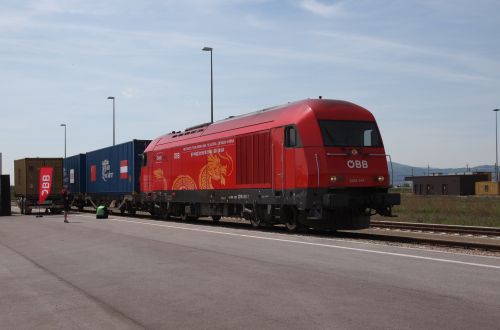The train transported 44 containers filled with consumer goods, leaving Chengdu on April 12 and travelling to Khorgos at the Kazakhstan border where containers were transferred to 1520mm-gauge wagons. The train then continued via Saratov, Russia, and Kiev, Ukraine, to Dobra on the Ukrainian-Slovakian border where the containers were transferred to standard-gauge wagons before continuing to Vienna via Bratislava, arriving on April 26. In Vienna, the containers were either transferred to other trains or lorries to continue their onward journey.
Rail Cargo Austria says it is planning 400-600 trans-Eurasian trains per year, which it says are competitive with similar journeys by sea. An agreement has also been signed with the Russian Ministry of Transport to cut the journey time to just 10 days in the future.

